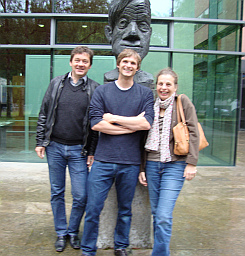Next Generation Sequence Data Analysis Course in 2014
Course Description
The goal of the course is to teach the course participants both the theory and application of methods to analyze next generation sequence (NGS) data for human traits.
Attendees will learn how to design studies, call variants from NGS data, analyze population- and family-based sequence data and evaluate variant functionality.Analyses will include performing complex trait rare variant association analysis for population and trio data and also identifying variants for Mendelian traits.
Exercises will be carried out using a variety of computer programs (GATK, IGV, Polyphen2, PSEQ, SEQPower, and Variant Association Tools (VAT)).
TOPICS will be include: sequence alignment, calling variants from NGS data, population genetics (purifying selection, drift, etc), quality control of NGS data, association testing framework for quantitative and qualitative traits, rare variant association methods, estimating power and sample size for rare variant association tests, imputation of rare variants, detecting putative causal variants for Mendelian traits and evaluating variant functionality.
The Course instructor

Data sets used during the course
- GATK exercise (seq.gatk.tgz)
- Gemini exercise (seq.gemini.tgz)
- PopGen exercise (seq.popgen.tgz)
- PSeq exercise (seq.pseq.tgz)
- Regression exercise (seq.regression.tgz)
- SeqPower exercise (seq.seqpower.tgz)
- VAT exercise (seq.vat.tgz)
- Collection of all data sets (seq_gmc.tgz)
- Collection of analysis scripts (seq_gmc_scripts.tgz)
In order to obtain a particular data set, please follow the following steps:
- Download the respective data archive file ('*.tgz') and place it into an appropriate directory.
- At the command prompt (aka shell or terminal), make this directory the working directory by using the 'cd' command.
- Extract the data files by typing tar -xzvf and adding the name of the archive file (e.g. tar -xzvf seq.gatk.tgz for the GATK exercise). The data files will then be in a corresponding subdirectory (e.g. gatk).
- Change to this subdirectory (e.g. cd gatk) and proceed with the exercise.
